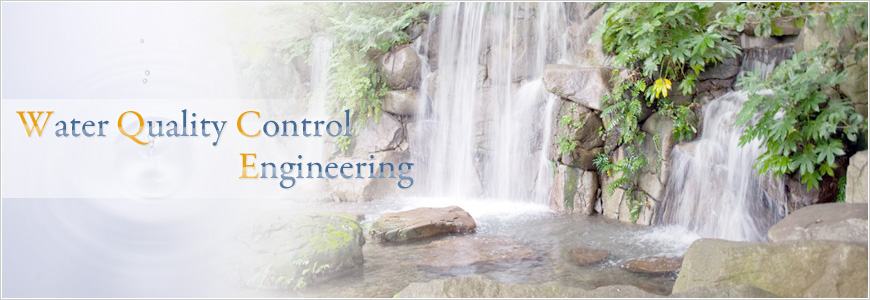Dr. Muhammad ALI
- TEL: +81-11-706-5587
- e-mail:ali_exclusive[at]hotmail.com

King Abdullah University of Science & Technology (Saudi Arabia)
(Since Jan. 6th, 2016)
Excessive release of nitrogen to the natural waters leads to eutrophication that can expedite growth of weeds and algae. The decomposition of the algae by bacteria uses so much of the dissolved oxygen that most or all aquatic lives die, which creates more organic matter for the bacteria to decompose. In addition to causing deoxygenation, some algal species produce toxins that contaminate drinking water supplies. To ensure sustainable wastewater discharge to natural waters, it should be treated and nitrogen should be removed before discharge. Currently, I’m doing research on various aspect of autotrophic nitrogen removal process known as anaerobic ammonium oxidation (anammox). Anammox process is more environmental friendly, economical and effective process as compared to conventional nitrogen removal process (nitrification and denitrification).

However, integration of anammox process into wastewater treatment plant is still a challenge because of extremely slow growth rate of anammox bacteria and long start-up period. I have successfully developed a simple, rapid and effective preservation and reactivation technique for anammox bacterial strain “Candidatus Brocadia sinica”. Further, rapid start-up of anammox process was achieved by immobilization of preserved anammox biomass.
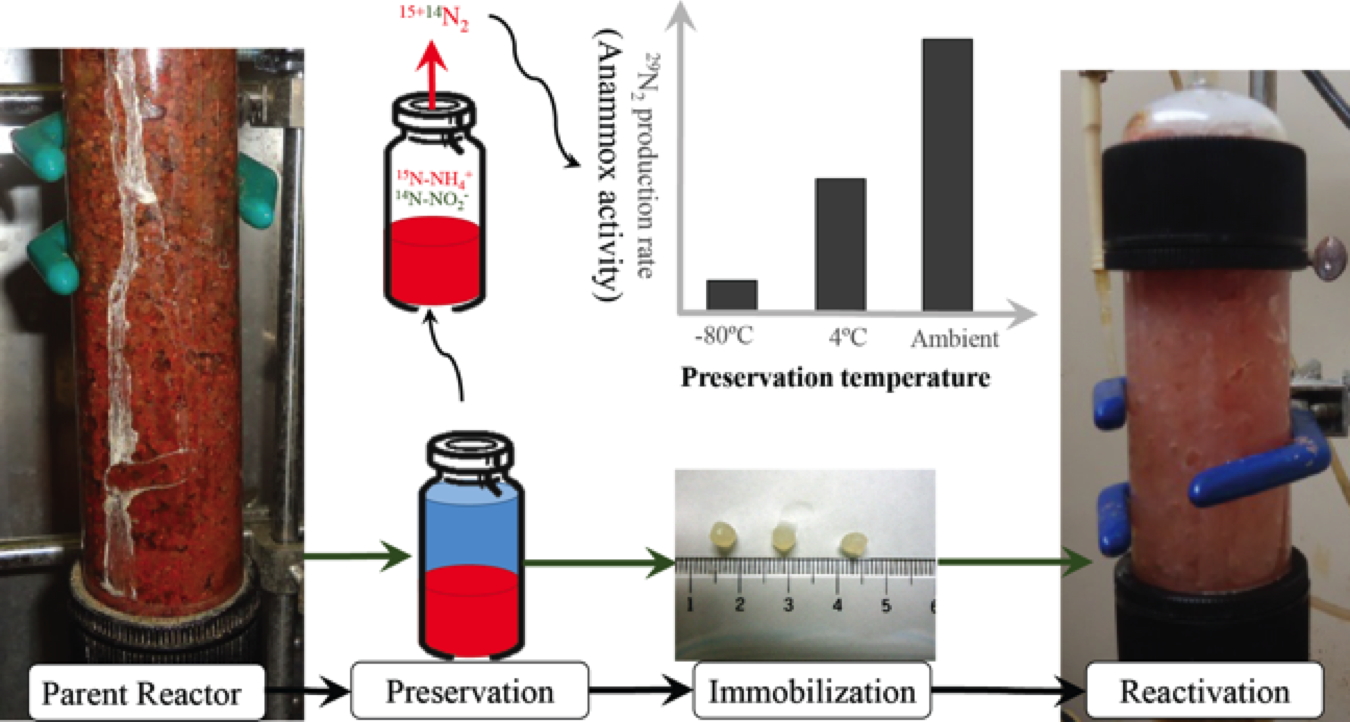
Additionally, it was observed that nitrogen removal performance of artificially immobilized anammox biomass is far better than naturally aggregated anammox biomass due to higher relative effective diffusivity. High anammox activity (i.e., NH4+ and NO2- consumption rates) was evenly detected throughout the gel beads by microelectrodes due to faster and deeper substrate transport. In contrast, anammox activity was localized in the outer layers of the granular biomass, indicating that the inner biomass could not contribute to the nitrogen removal. This indicates that the gel immobilization method requires much lower seeding biomass for start-up of anammox reactor.
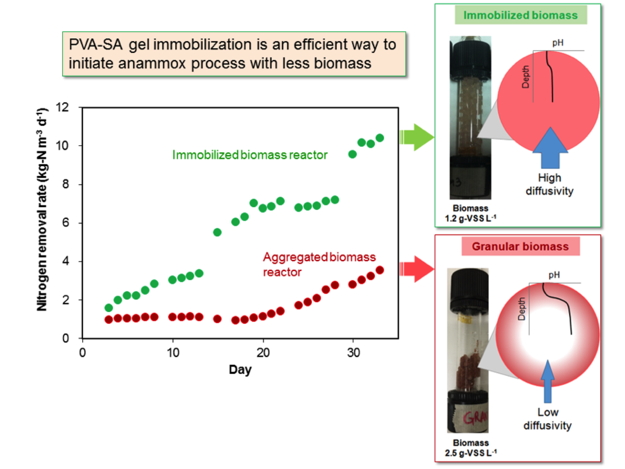
Besides, I have characterized the physiology of anammox bacterial strain “Candidatus Jettenia caeni” (formerly known as planctomycete KSU-1). In this research, comprehensive investigation physiological characteristics and detailed phylogenetic analysis of >90% enriched culture was performed. Enriched anammox species was revealed to be a new strain of the genus “Ca. Jettenia” and named as “Ca. Jettenia caeni”. This anammox bacterial strain was found to be a mesophilic and neutrophilic. In addition, this bacterial strain demonstrated respiratory ammonification with oxidation of acetate. In addition, this study was an outstanding combination of proteomics and cellular metal analysis. Proteomic analysis was performed to examine underlying core metabolisms, and high expressions of hydrazine synthase, hydrazine dehydrogenase, hydroxylamine dehydrogenase, nitrite/nitrate oxidoreductase, and CO dehydrogenase/acetyl-CoA synthase were detected. These proteins require iron or copper as a metal cofactor, and both were found dominant in cellular metal analysis.
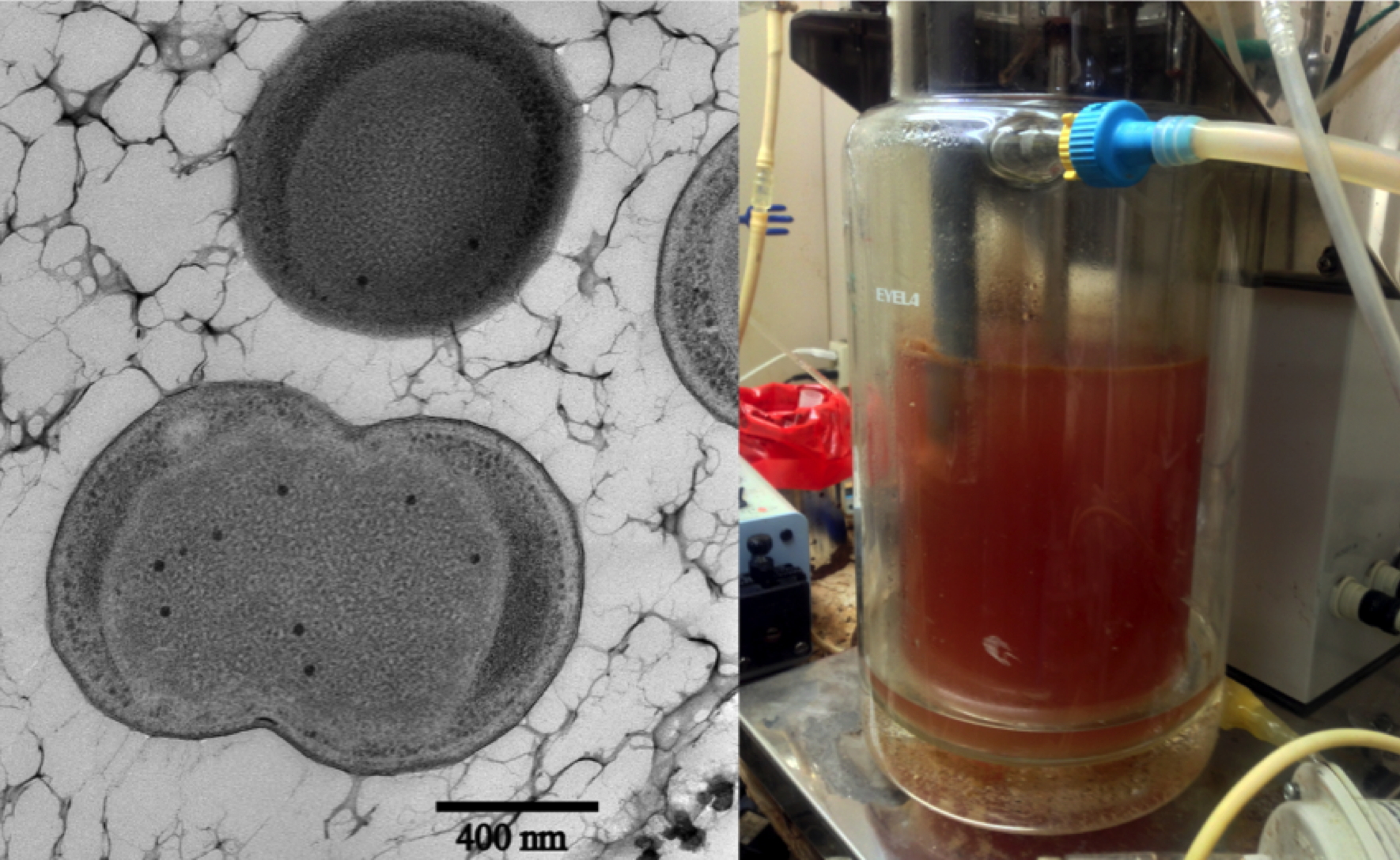
My main motivation is to develop an economical, durable and efficient immobilization technology for anammox bacteria which can enable rapid startup of anammox process in wastewater treatment plant. My overall work would be a unique combination of microbiology and process engineering, focused on developing an integrated wastewater treatment system by coupling anammox process with microbial fuel cell for sustainable and energy-positive wastewater treatment.
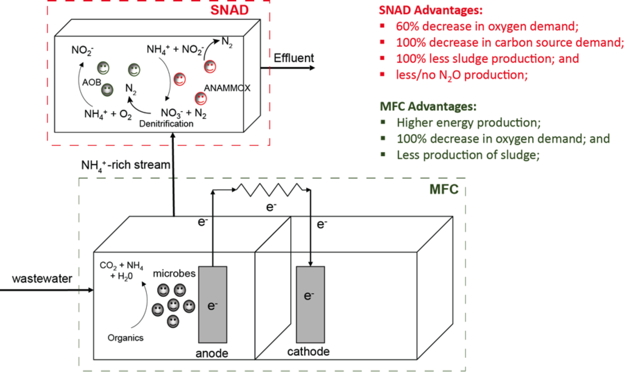
- Anammox-based technologies for nitrogen removal: Advances in process start-up and remaining issues
Ali, M. and Okabe, S.
Chemosphere, 2015, 141, 144-153. - Physiological characterization of anaerobic ammonium oxidizing bacterium "Candidatus Jettenia caeni"
Ali, M., Oshiki, M., Awata, T., Isobe, K., Kimura, Z., Yoshikawa, H., Hira, D., Kindaichi, T., Satoh, H., Fujii, T. and Okabe, S.
Environmental Microbiology, 2015, 17(6), 2172-2189. - Rapid and successful start-up of anammox process by immobilizing the minimal quantity of biomass in PVA-SA gel beads
Ali, M., Oshiki, M., Rathnayake, L., Ishii, S., Satoh, H. and Okabe, S.
Water Research, 2015, 79, 147–157. - Draft genome sequencing of anaerobic ammonium oxidizing bacterium, "Candidatus Brocadia sinica"
Oshiki, M., Shinyako-Hata, K., Satoh, H. and Okabe, S.
Applied and Environmental Microbiology, 2015, 3(2), e00267-15. - Simple, rapid and effective preservation and reactivation of an anaerobic ammonium oxidizing bacterium "Candidatus Brocadia sinica"
Ali, M., Oshiki, M. and Okabe, S.
Water Research, 2014, 57, 215-222. - Simulation of the impacts of land-use change on surface runoff of Lai Mullah basin in Islamabad, Pakistan
Ali, M., Khan, S. J., Aslam, I., and Khan, Z.
Landscape and Urban Planning, 2011, 102, 271-279.
- Rapid development of anammox process with a minimum amount of biomass
Satoshi Okabe and Muhammad Ali
IANAS2015
CBEAD, Dalian, China
Aug. 7-9, 2015 - Rapid achivement of anammox planktonic cells in membrane bioreactor
Lei Zhang, Muhammad Ali and Satoshi Okabe
IANAS2015
CBEAD, Dalian, China
Aug. 7-9, 2015 - Rapid start-up of anammox process by using immobilized anammox biomass (Poster presentation)
Muhammad Ali, Mamoru Oshiki, Satoshi Ishii, Lashitha Rathnayake, Hisashi Satoh and Satoshi Okabe
The 22nd Public Health Engineering Symposium
Frontier Research in Applied Sciences Building, Hokkaido University, Japan
Nov 21st, 2014. - Start-up of gel immobilised anammox reactors with different biomass concentrations
Ali M., Oshiki, M. and Okabe, S.
IWA World Water Congress and Exhibition(Lisbon, Portugal, Sep. 21st-26th, 2014) - A simple, rapid and economical start-up of anammox process
Ali M., Oshiki, M. and Okabe, S.
The 4th Young Professors and Students Symposium(Xi'an, China, March 27th, 2014) - Rapid preservation and reactivation of anaerobic ammonium oxidizing bacteria
Ali, M., Oshiki, M. and Okabe, S.
Public Health Engineering Symposium.
Hokkaido University, Sapporo, Japan.
Dec. 4th, 2013. - Rapid preservation and reactivation of anaerobic ammonium oxidizing bacteria
Ali, M., Oshiki, M. and Okabe, S.
50th Environmental Engineering Research Forum.
Hokkaido University, Sapporo, Japan.
Nov. 19th-21st, 2013. - Rapid preservation and reactivation of anaerobic ammonium oxidizing bacteria
Ali, M.
2nd International Doctraol Symposium with Partner Universities.
Hokkaido University, Sapporo, Japan.
Oct. 24-25th, 2013 - Rainwater harvesting potentials for Rawalpindi and Islamabad - Pakistan
Ali, M., and Khan, Z.
Pakistan Engineering Congress, 2010
| 2009 | MS Environmental Engineering, School of Civil and Environmental Engineering, National University of Sciences and Technology, Pakistan |
|---|---|
| Sep. 2010 | Lecturer, School of Civil and Environmental Engineering, National University of Sciences and Technology, Pakistan |

